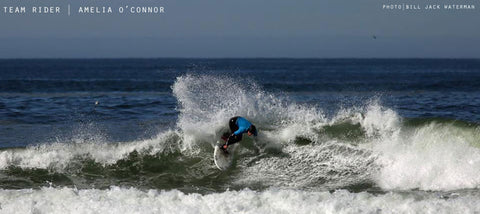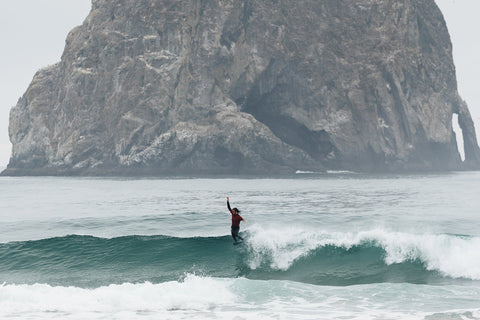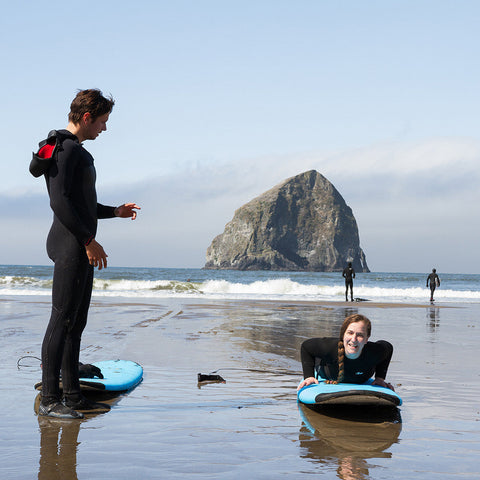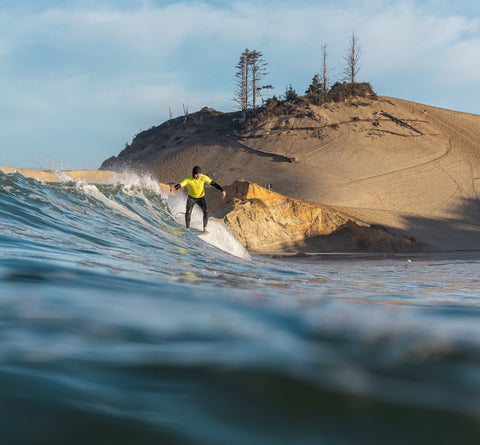When I write a wetsuit review, I try not to get too technical. I avoid pretending to understand the difference between Thermo Dry Celliant (TDC) and Furnace Carbon. I won’t try to explain why Technobutter is a better neoprene than F’N Lite. I want to keep things simple so it’s easier for you to decide what wetsuit is best for you. The fact is, if you are spending upwards of $400 on a wetsuit from one of the major manufacturers, you are going to be getting a good product. However, each company has their own philosophy on how to make the best wetsuit. They also have their own thoughts on sizing and how their suits are designed. Right now, it’s impossible to produce a suit that has everything. Being both warm and lightweight, dry but flexible, inexpensive yet high performance. So it’s my hope to break down each suit we carry in a manner that makes it easier to understand what attribute is featured, so you can choose which best fits your needs.
The first suit I am going to talk about is the Billabong Furnace Carbon X 4/3. For the better part of the past decade, both Xcel and O’Neill have been on the cutting edge of developing suits designed for our extremely cold water. Billabong has been slightly behind the curve, seeming to choose to focus on the numerous other aspects of their tremendous business juggernaut. Meanwhile, both Xcel and O’Neill focus primarily on building wetsuits. This approach has worked well for them and everybody who surfs cold water has benefited greatly from it. However, with Billabongs introduction of the Furnace Carbon X 4/3, they enter a very worthy competitor in the high performance, cold water wetsuit game.
Moment and Billabong Team Rider Ameila O'Connor putting her Billabong wetsuit to the test
I am 6’0 and 170 pounds and seem to fit perfectly into a large O’Neill or Xcel. I carry most of my weight in my upper body. I seemed to have had an ancestor who spent all his time in the gym doing chest and arm exercises and avoided leg days. I have been blessed with my father’s wide shoulders, but also inherited the family chicken legs. So according to the size charts, my weight and height calls for a medium tall, but how I carry it requires me to wear a Large. This is an important aspect of choosing the correct wetsuit that everybody must pay attention too. We all don’t fit perfectly into the size charts, so it’s very important to try them on before you purchase anything.
When Billabong asked what size wetsuit I needed, my instinct said large. As soon as I tried it on however, I realized my mistake. Billabong sizes seem to run a little larger than the rest. I had excess room in both the arms and legs that I normally don’t have in my other suits. I could feel water pool in these spots when I was surfing, but it's due more to improper sizing than poor quality. The other thing I noticed was the internal membrane that goes around your neck to help keep water off you when getting flushed. It took extra time to properly put on and to make sure it was flat and not bunched up. Again however, it seemed to work great while surfing and did its job very well. Overall I was impressed with the suit. The water temperature was colder than normal but I was more than comfortable. I could notice a slight reduction in flexibility and increased weight over my other suits, but not enough to be a negative. Billabong seems to be sacrificing a bit of performance for warmth, which for a 4/3 in Oregon, isn’t a bad thing. The suit will already be lighter than your favorite 5/4, so if you are looking to replace it, the Billabong Furnace Carbon X 4/3 would be a great option.
Pros
- Very warm for a 4/3
- Price/value for a high-end suit
- Quality seams and construction
Cons
- Challenging entry system
- Slightly heavier than comparable suits
- Slight loss of flexibility
Overall
A great option for a 4/3 high-end suit, especially for the price. What is lost in performance is made up in warmth.












